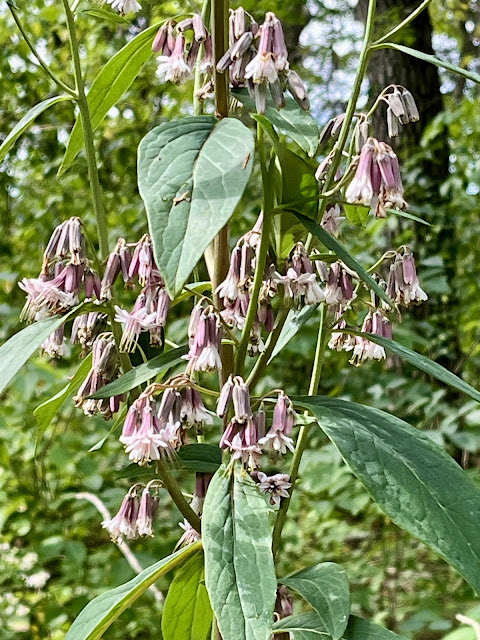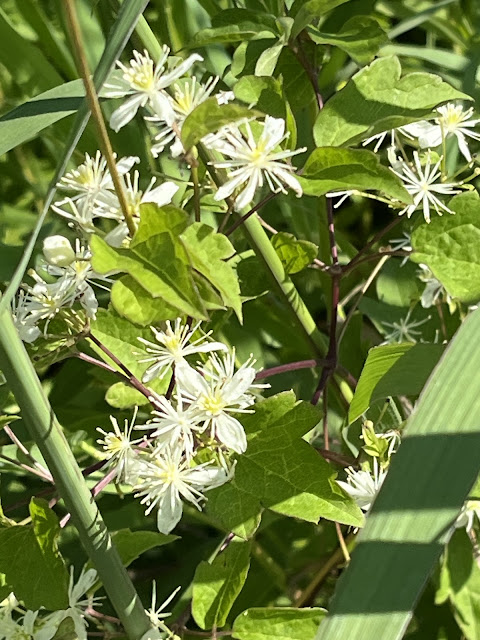Seneca Snakeroot (Polygala senega)
Shining Lady’s Tresses (Spiranthes lucida)
Bottle Gentian (Gentiana andrewsii)
Sawtooth Sunflower (Helianthus grosseserratus)
Canadian Goldenrod (Solidago canadensis)
Photo by Gary Kurtz
Canadian goldenrod is a herbaceous perennial that can grow up to 6 feet tall. Its small, vibrant yellow flowers form large clusters at the top of the stem, with each cluster reaching up to 5 inches long. The flowers bloom from late summer to early fall, attracting pollinators like bees and butterflies. The stems are erect and rigid, covered with fine hairs towards the top and mostly smooth lower down, ranging from 2 to 6 feet in height. The leaves are alternate on the stem, lanceolate to broad-linear in shape, and range from 2 to 5 inches long and about 1 inch wide. The margins can be sharply serrated or slightly serrated with small teeth. The upper side of the leaves is medium green with small white hairs, while the underside is smooth and light green. Canadian goldenrod thrives in moist soil with medium texture and moderate levels of organic matter, commonly found in damp meadows, along waterways, and in ditches along roadsides and railroads. (SF)
Cream Gentian (Gentiana alba)
Tall Boneset (Eupatorium altissimum)
Wood Nettle (Laportea canadensis)
From the tangled underbrush of Wisconsin’s forests, we find Laportea canadensis, or wood nettle--a plant more likely to earn a curse than a compliment thanks to its stinging hairs. Yet for all its prickly nature, wood nettle is a quiet cornerstone of healthy forest ecosystems: anchoring soil, nurturing wildlife, and helping extend biodiversity.
In the world of landscaping, a plant’s worth is often judged by aesthetics—showy blooms, tidy habits, or ease of maintenance. But native plants like wood nettle, often labeled as weeds, provide irreplaceable ecological benefits. Their presence fosters layered habitats, supports native insects, and helps reduce the impact of environmental stress.
Wood nettle thrives in shaded, moist areas of Wisconsin’s forests and wetlands, where it often forms dense patches in low-lying hardwood stands and along streambanks. It typically grows two to four feet tall with leaves up to six inches long, featuring serrated edges and stinging hairs that serve as a natural defense. Its tiny greenish-white flowers, though unassuming, play their part in forest reproduction through separate male and female blooms. Most importantly, this plant stabilizes soil, prevents erosion, and offers food and shelter to countless insects and small animals.
It’s easy to overlook plants like this—too prickly, too plain, too wild for conventional garden appeal. But wood nettle is emblematic of an urgent truth: biodiversity depends on diversity, not just of color or form, but of function. These underappreciated species support webs of life that charismatic flowers alone cannot sustain.
By rethinking our private landscapes—through practices like meadowscaping—we can move beyond manicured monocultures and embrace complexity. Incorporating native species, including the “unpopular” ones, transforms sterile turf into rich habitat. When we welcome plants like wood nettle into our yards, we aren't just tolerating the wild—we’re restoring it. (LS)
Flat-top Aster (Doellingeria umbellata)
Jumpseed (Persicaria virginiana)
Elm-leaf Goldenrod (Solidago ulmifolia)
Virgin’s Bower (Clematis virginiana)
Stiff Sunflower (Helianthus pauciflorus)

Photo by Gary Kurtz
Stiff sunflower is a native, perennial wildflower in Wisconsin that grows up to six feet tall. The flowers are yellow and measure 2 to 3-1/2 inches across. They have 10 to 25 petals (ray flowers) surrounding a usually purplish-brown center disk. The bracts are short, wide, and flattened, usually with a dull point at the tip and short hairs around the edges. The stems are bristly and turn reddish-brown with age. They are mostly naked and branching. The leaves are two to 10 inches long and 3/4 to 2-1/4 inches wide. They are typically shaped like the tip of a spear, with a very rough texture. The leaves are short-stalked to stalkless and have shallow, widely spaced teeth along the edges. Stiff sunflowers are are commonly found in dry or drying prairies, roadsides, and open woods. They prefer full sun and well-drained soils. (SF)


















